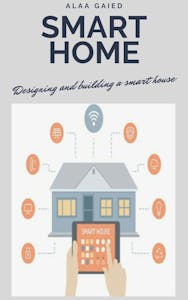With the diversity of human means of communication, information and telecommunication technologies have become a sufficient condition to ensure unlimited communication with all the inhabitants of the planet. We can then ask ourselves what will be the next step?
Human-machine or machine-to-machine communication can be seen as a new type of possible dialogue. Indeed, for about ten years now devices have been becoming intelligent, act according to the profile of users and are able to make decisions autonomously.
Thinking about GSM telecommunication technology, it immediately comes to mind voice communication, sending and receiving SMS and MMS, mobile internet, and everything else that works using this modern technology introduced in our daily life.
We can therefore imagine, using these services provided through GSM technology, that the intelligent home will be part of our future. Who would not want a house that takes care of domestic tasks, that provides its occupants with more comfort, security and well-being, that makes life easier for them and meets their needs and desires even before they have been formulated? All this is the domain of home automation. By home automation, it is possible to control and command systems remotely using the GSM network. Applications can be used in various fields such as the remote monitoring and control of machines, alarm and surveillance systems, to control doors and windows or to switch on lights...
It is in this context that my book entitled "Designing and building a smart house" is situated. The aim of this project is to develop a system or platform to help in the administration of household equipment. This system allows the piloting and control of the different devices available in the house as well as the description of the services provided and the actions that can be invoked.
My book contains three chapters. Firstly, we began with a general presentation in which we will present the project framework and the objectives to be achieved. Then, in the second chapter, we made a detailed design of the system we adopted for its implementation. The realization of our application will be presented, in the third chapter, in which we will present the working environment and the various components implemented in the architecture of our system.
We will finish this book with a general conclusion summarizing the different phases of our work, pointing out the beneficial aspects of this book.
